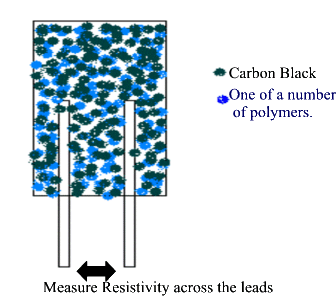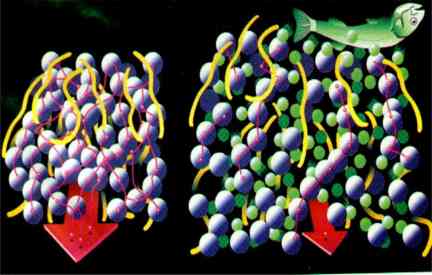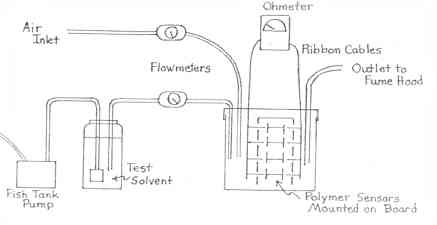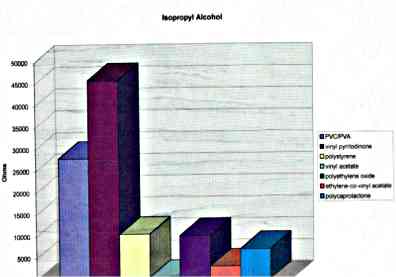| The
Basic Design of the Electronic Nose |
 |
 |
| This
is the basic component of the electronic nose. This rectangular
piece with the two leads coming out of it was part of a fiberglass mounted
surface mount board for computers. To make the functioning
component, the chip was dipped into a carbon black/polymer solution and
allowed to dry. |
Drawing
from the Discover article that inspired the students
September 1996, p. 46 by Gary Taubes. The drawing on the left
depicts the yellow polymer strands among the conductive carbon black
spheres. The drawing on the right shows the green fish odor
molecules interacting with the yellow polymer strands changing their
alignment causing the route along the conductive carbon black strands to
change. Hence the resistance has changed. |
|
|
|
Polymers
Used In DCE's Electronic Nose |
|
Polymer |
Affinity for Water |
|
Polyvinyl
chloride/polyvinyl acetate |
Low
To
High
|
|
Polystyrene |
|
Polyvinyl Acetate |
|
Polyethylene Oxide |
|
Ethylene-covinyl acetate |
|
Polycaprolactone |
|
Polyvinyle pyrrolidone |
|
 |
| The
seven different polymers used in the DC Everest electronic nose. These
seven polymers correspond to the seven different colors in the graphs
below. Remember the Caltech electronic nose used 17 different
polymers. |
This
is a very crude diagram of the electronic nose setup the students used.
There is a photo of the electronic nose setup on the Chem-Ed Conference
page. |
|
|
 |
 |
| A
side by side comparison of the electrical fingerprints for two different
substances. The electronic fingerprint for vinegar is on on the
left. The electronic fingerprint for isopropyl alcohol is on the
right. On the left hand scale is ohms, an indication of the
resistance found in that chip sensor. Notice that for these two
different odors, the resistances through the polymers chips are very
different. |
